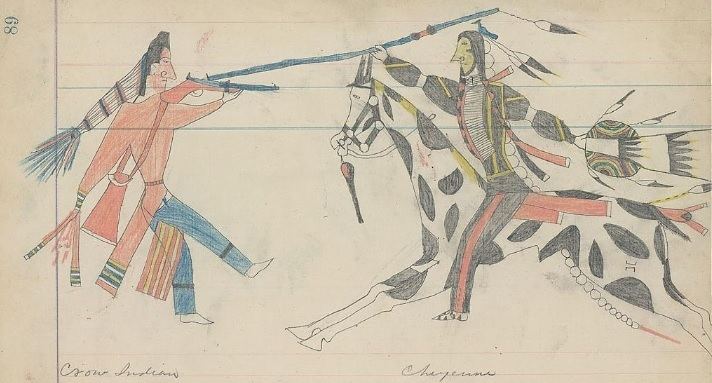 | ||
Counting coup refers to the winning of prestige against an enemy by the Plains Indians of North America. Warriors won prestige by acts of bravery in the face of the enemy, which could be recorded in various ways and retold as stories. Any blow struck against the enemy counted as a coup, but the most prestigious acts included touching an enemy warrior with the hand, bow, or coup stick and escaping unharmed. Touching the first enemy to die in battle or touching the enemy's defensive works also counted as coup. Counting coup could also involve stealing an enemy's weapons or horses tied up to his lodge in camp. Risk of injury or death was required to count coup.
Escaping unharmed while counting coup was considered a higher honor than being wounded in the attempt. A warrior who won coup was permitted to wear an eagle feather in his hair. If he had been wounded in the attempt, however, he was required to paint the feather red to indicate this.
After a battle or exploit, the people of a tribe would gather together to recount their acts of bravery and "count coup." Coups were recorded by putting notches in a coup stick. Indians of the Pacific Northwest would tie an eagle feather to their coup stick for each coup counted, but many tribes did not do so. Among the Blackfoot tribe of the upper Missouri River Valley, coup could be recorded by the placement of "coup bars" on the sleeves and shoulders of special shirts that bore paintings of the warrior's exploits in battle. Many shirts of this sort have survived to the present, including some in European museums.
Joe Medicine Crow (1913-2016) is credited with achieving the feat while serving with the US Army during World War II, as on one occasion he overpowered and disarmed a German soldier, and later stole horses from a SS unit.
